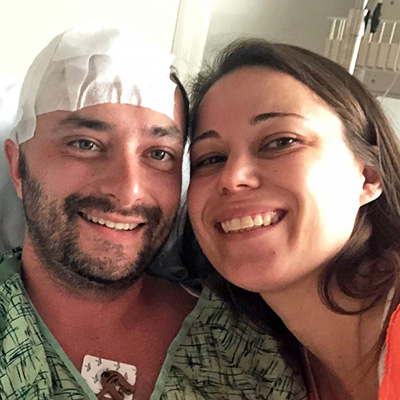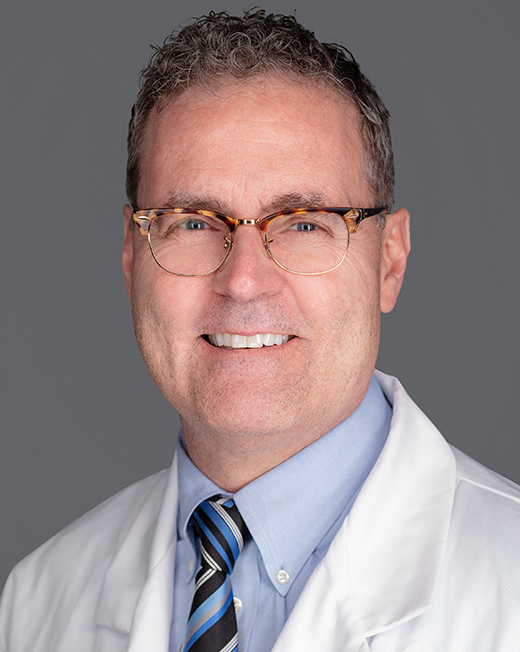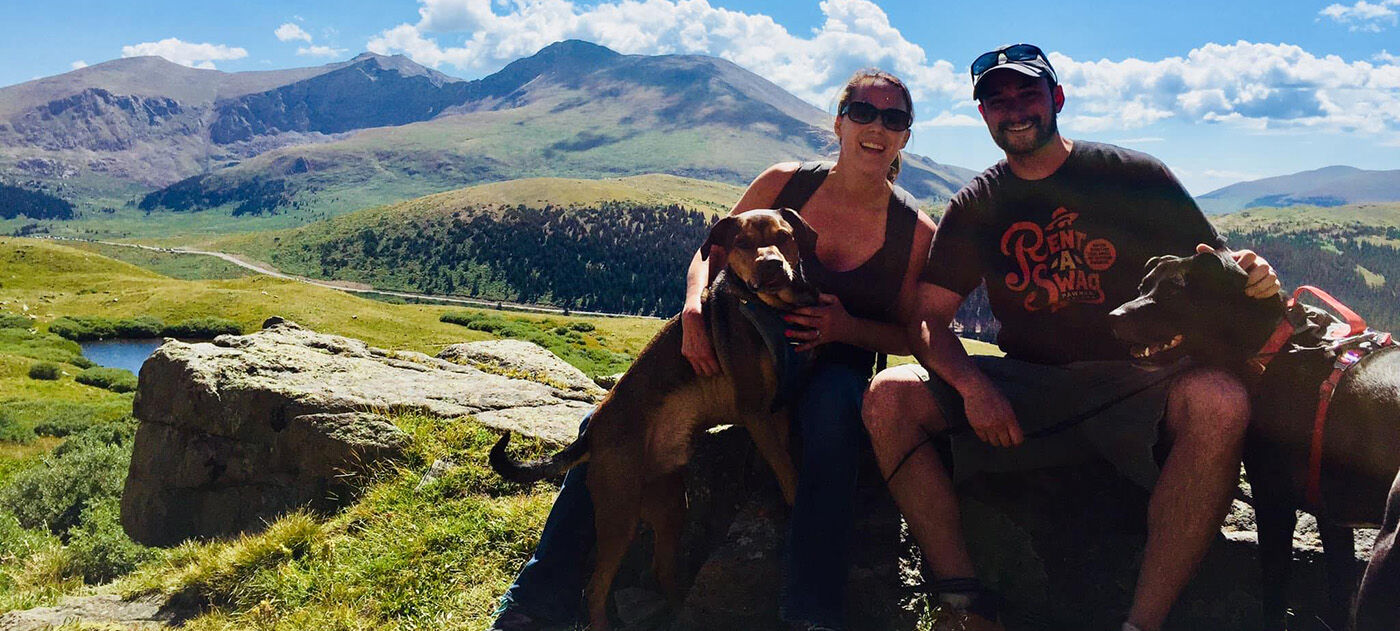Tampa Patient Defying Glioblastoma Odds
When John Shadock went to the doctor to discuss his ongoing migraines in 2019, he was shocked when doctors diagnosed him with glioblastoma and gave him about 12 months to live.
Shadock, 41, and his wife Ali, 48, quickly learned that this form of brain cancer is one of the most complex and treatment-resistant cancers. Five years later, his survival is extraordinary, according to Peter Forsyth, MD, chair of the Neuro-Oncology Program at Moffitt Cancer Center, where John is being treated.

John and Ali Shadock shortly after John's surgery.
“He is resilient as is his wife,” Forsyth said. “It’s remarkable that someone lives that long. I think he’s an inspiration because he’s happy and doing OK.”
July 17 marks Glioblastoma Awareness Day, but the Shadocks raise awareness for this type of cancer daily through their “Strong All Along” Instagram account. It’s a way to let other patients facing similar diagnoses know that they are not alone and that there is hope.
“We want to make someone else who is having a bad day feel better,” John said.
John has been on different clinical trials during his treatment at Moffitt. Forsyth says they may have helped keep him healthy, using him as an example of the impact trials can have on current and future patients.
“It’s important to know how those can help,” Forsyth said. “One was an immunotherapy trial that might account for how well he’s doing.”
One clinical trial involved a slightly modified polio virus to act as a red flag for John’s immune system. The virus targets glioblastoma cells by attracting the body’s own immune cells to the cancer.
In addition to the trials, Forsyth credits Ali for her husband’s survival.
“She’s just amazing,” Forsyth said. “She is at every appointment and is always supporting him. That’s a big part in cancer treatment: The caregivers, family and friends offering support.”

While there is still a lot of work to do, Forsyth is hopeful for the future.
“We have to cure these cancers,” Forsyth said. “I don’t know when that will happen, but the hope is tremendous right now to help people live longer. There are so many ways to harness your own immune system and that’s where the major discoveries will be made.”
Vincent Law is a neuro-oncology research associate in Forsyth’s lab and echoes the hope that a cure is on the way. He says he commends patients, families and survivors for their bravery and their strength as they go through treatment and clinical trials as researchers work to find the cure.
“It’s not science fiction,” Law said. “I want to tell them that there is hope.”

John and Ali Shadock walk with the American Cancer Society to raise awareness about glioblastoma.
Every successful clinical trial moves the needle closer to a cure, Law believes, and he’s hopeful that a major breakthrough is on the horizon for glioblastoma patients and neuro patients overall.
“I feel like we’re so close. I don’t know if we’re going to cure it in my lifetime, there are still things we’re trying to figure out, but the answers are there, and through collaboration and conversation, we will get there,” Law said.
John, who moved to Tampa from the Midwest to be treated at Moffitt, calls his case a miracle, and credits researchers and doctors with his survival thus far.
“Miracles 100% do happen,” John said. “I’m proof. Instead of being scared you have to be courageous about it and know you are going to beat it.”



